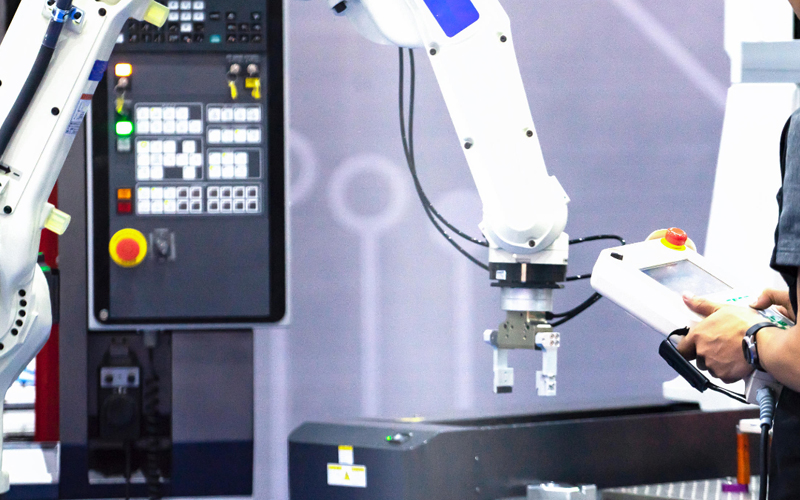Robotic Process Automation (RPA) has impacted nearly every facet of businesses. It is no longer a buzzword but has become a vital technology transforming businesses across sectors. Its widespread adoption is endorsed by data which reveals that the RPA market which stood at $22.79 billion in 2024 is expected to grow at a CAGR of 43.9% between 2025 and 2030.
RPA automates repetitive, high-volume routine tasks – historically requiring human intervention – through the deployment of software bots. As a prime mover in digital transformation, technology is widely embraced by businesses seeking its inherent advantages.
Benefits of RPA
Several benefits have led to the phenomenal rise of RPA implementation across industries. Key benefits include:
- Increased productivity: Bots execute various mundane administrative tasks common to all businesses to complete them more accurately, efficiently, and quickly, which accelerates business processes and boosts productivity.
- Enhanced job satisfaction: RPA relieves humans from mundane tasks, helping them focus on more strategic and fulfilling work that enhances their skill sets while also providing more tangible value to the business. When bots take over routine tasks, humans can focus on tasks that require empathy, judgment, and other strategic skills. Data indicates that 89% of employees have experienced job satisfaction because of automation.
- Cost reduction and improved ROI: Automation helps businesses minimize labor costs while ensuring business growth, leading to improved ROI.
- Reduced error rates: RPA significantly reduces error rates compared to human operators, eliminating mistakes in high-volume processes and minimizing the time and cost associated with correction and rework.
- Enhanced regulatory compliance: Each automated process is governed by regulations, corporate rules, and other mandates. RPA ensures compliance within every process with which it is integrated.
- Improved data security: RPA software introduces several layers of cybersecurity. It reduces the number of human touchpoints with sensitive data thereby reducing the possibility of inadvertent data breaches. RPA systems establish a clear audit trail for bot-data interactions. They can flag spurious activities and trigger logouts to protect against misuse.
- Greater scalability: RPA can easily adapt to changing workloads, thereby making the business scalable.
- Enhanced customer experience: Bots ensure faster response times and fewer errors in customer interactions. RPA also frees customer service agents from repetitive tasks and allows them to focus on providing customers with thoughtful and personalized customer experience.
Enterprise-Level Implementation of RPA
Scaling Robotic Process Automation across an entire organization presents unique challenges and significant opportunities. Successful enterprise-wide deployment can transform operations and drive substantial efficiency gains. Let us look at the steps involved in this process.
Step 1: Assessing Feasibility
The first step is to assess the feasibility of RPA for the business. At this stage, an organization focuses on understanding the right process for the execution of RPA. The company shortlists tools, technologies, vendors, etc.
Step 2: Pilot Project
This stage involves building an end-to-end solution based on defined requirements, a detailed solution design, test scripts, and a handover plan. Crucially, feedback is gathered from internal and external stakeholders at this point. This feedback serves as a baseline for documentation, identifies potential improvements and risks, and informs revisions to methodologies and frameworks to create a more robust and scalable solution.
Step 3: Laying the Groundwork for Automation Success
This stage proactively visualizes, designs, models, and optimizes processes prior to automation. Key activities include establishing best practices for documentation, governance, communication, and adjustments, as well as identifying new roles to fuel internal RPA growth.
Step 4: Scaling Across the Enterprise
Expanding RPA beyond initial deployments to an enterprise-wide scale is a strategic undertaking. Achieving success requires a clear understanding of business goals in conjunction with enterprise constraints, including existing procedures and policies. A strong business-IT partnership is fundamental to this process. Additionally, company-wide buy-in and the development of necessary RPA skillsets within the enterprise are critical for successful implementation.
Trends in RPA
Integration of Artificial Intelligence (AI)
RPA is limited in its scope as it can function only with structured data. However, the integration of AI and Machine Learning (ML) with RPA has made RPA intelligent and it can work with unstructured data as well.
Automation of complex workflows
Traditionally RPA could only automate rule-based processes. However, technological advancements allow RPA to work with complex workflows that involve multiple decision points and interactions.
Hyperautomation
class="mt10">RPA works with AI, ML, process automation tools, etc., to automate end-to-end business processes.
Process mining
class="mt10">Algorithms analyze event logs from different systems to identify areas where RPA can be used to enhance efficiency and reduce errors.
How can Infosys BPM help?
RPA is a transformative force reshaping how businesses function. It drives efficiency, accuracy, and scalability across industries. RPA offers a powerful toolset to help businesses stay competitive in today’s fast-paced digital landscape.
Infosys BPM's Robotic Process Automation solutions drive digital transformation by establishing near zero-touch processes. This foundation enables innovative service design, leading to amplified business value, enhanced customer experience, and significant efficiency improvements.







